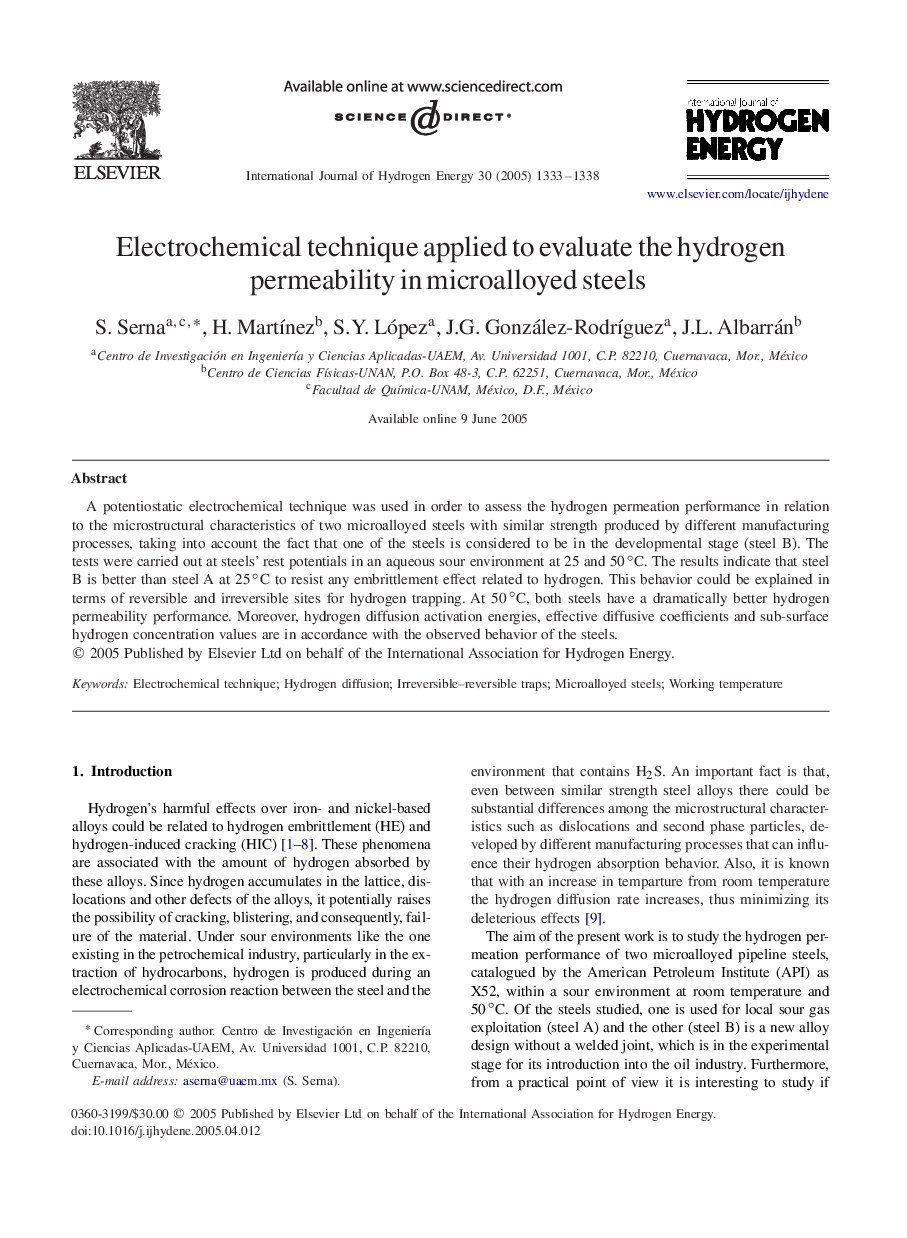| Article ID | Journal | Published Year | Pages | File Type |
|---|---|---|---|---|
| 9759231 | International Journal of Hydrogen Energy | 2005 | 6 Pages |
Abstract
A potentiostatic electrochemical technique was used in order to assess the hydrogen permeation performance in relation to the microstructural characteristics of two microalloyed steels with similar strength produced by different manufacturing processes, taking into account the fact that one of the steels is considered to be in the developmental stage (steel B). The tests were carried out at steels' rest potentials in an aqueous sour environment at 25 and 50âC. The results indicate that steel B is better than steel A at 25âC to resist any embrittlement effect related to hydrogen. This behavior could be explained in terms of reversible and irreversible sites for hydrogen trapping. At 50âC, both steels have a dramatically better hydrogen permeability performance. Moreover, hydrogen diffusion activation energies, effective diffusive coefficients and sub-surface hydrogen concentration values are in accordance with the observed behavior of the steels.
Related Topics
Physical Sciences and Engineering
Chemistry
Electrochemistry
Authors
S. Serna, H. MartÃnez, S.Y. López, J.G. González-RodrÃguez, J.L. Albarrán,
